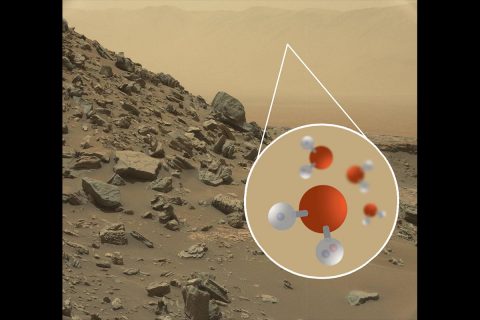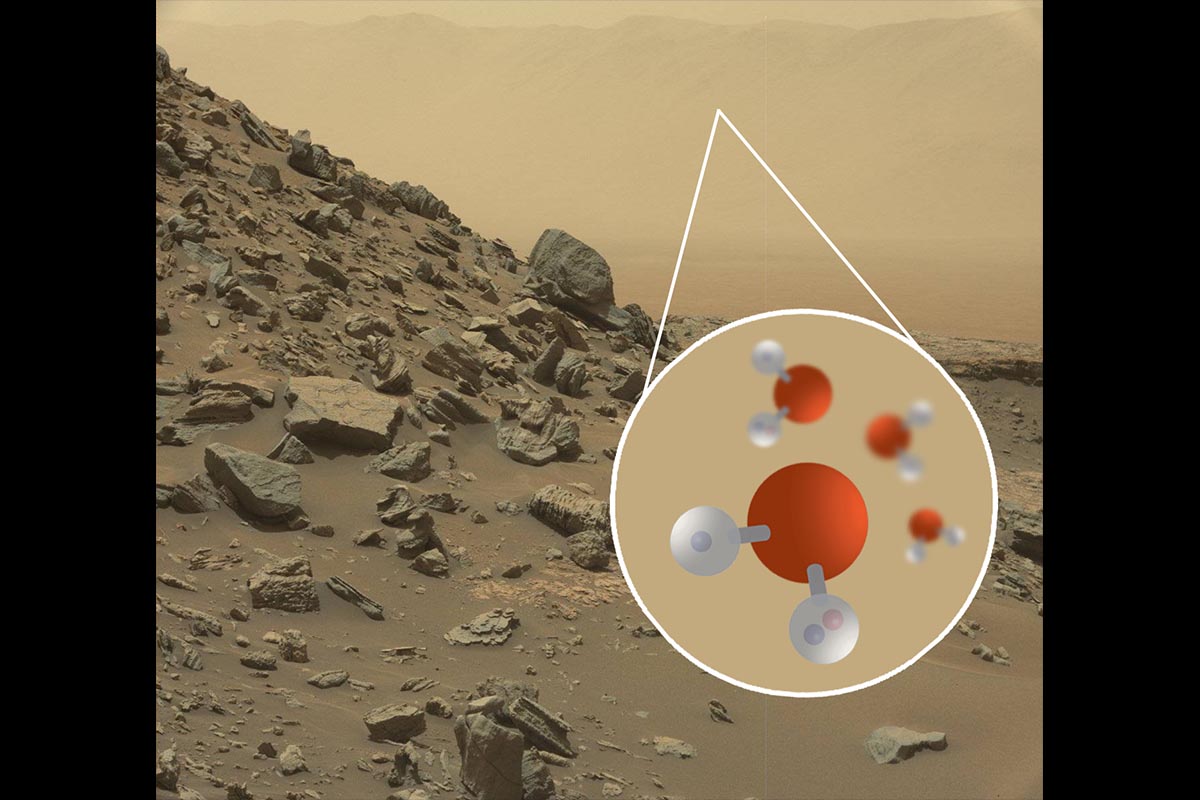 Washington, D.C. – NASA says Mars may be a rocky planet, but it is not a hospitable world like Earth. It’s cold and dry with a thin atmosphere that has significantly less oxygen than Earth’s. But Mars likely once had liquid water, a key ingredient for life. Studying the history of water can help uncover how the Red Planet lost water and how much water it once had.
Washington, D.C. – NASA says Mars may be a rocky planet, but it is not a hospitable world like Earth. It’s cold and dry with a thin atmosphere that has significantly less oxygen than Earth’s. But Mars likely once had liquid water, a key ingredient for life. Studying the history of water can help uncover how the Red Planet lost water and how much water it once had.
“We already knew that Mars was once a wet place,” said Curtis DeWitt, scientist at the Universities Space Research Association’s SOFIA Science Center. “But only by studying how present-day water is lost can we understand just how much existed in the deep past.”

Some of this research can be conducted without leaving Earth using SOFIA, the Stratospheric Observatory for Infrared Astronomy.
The world’s largest flying observatory can find molecules and atoms in deep space and on planets — like forensic analysis for astronomy — because it flies above 99% of Earth’s infrared-blocking water vapor.
To learn more about how Mars lost its water, and how modern-day water vapor might vary seasonally, SOFIA studied how water vapor evaporates differently during two Martian seasons.
Water is also known by its chemical name H2O because it’s made of two hydrogen atoms and one oxygen atom. But with special instruments, scientists can detect two types: regular water, H2O, and deuterated water, HDO, which has an extra neutrally-charged particle called a neutron in one of the hydrogen atoms making it heavier.
Deuterated water evaporates less efficiently than regular water, so more of it remains as liquid water evaporates. Therefore, studying the ratio of deuterated water to regular water, which scientists call the D/H ratio, in existing water vapor can retrace the history of liquid water evaporation — even if it no longer flows. But it’s not clear if this ratio is affected by seasonal changes on the Red Planet.
Mars has ice caps at its poles. They are covered with carbon-dioxide ice and snow that expand and shrink with the Martian seasons. As the planet’s Northern Hemisphere approaches its own Summer Solstice, the ice cap shrinks as temperatures warm — causing some of the ice to evaporate and expose water ice. The southern ice cap, however, is covered with carbon-dioxide ice even during the summer. Scientists were not sure if these seasonal changes could affect the ratio of heavy water to regular water in the Martian atmosphere.
Previous measurements of the D/H water ratio used different instruments, resulting in slightly different measurements across Martian seasons and locations. Researchers on SOFIA used the same instrument, the Echelon-Cross- Echelle Spectrograph, or EXES, to get consistent measurements over two seasons and locations: summer in the planet’s Northern Hemisphere and summer in its Southern Hemisphere.
“If we can eliminate seasonal dependence as a factor in this ratio, then we’re one step closer to getting an answer to how much water was originally present on Mars,” said DeWitt.
The results are published in Astronomy and Astrophysics. Further observations are underway to monitor different Martian seasons. Examining Mars’ history and geology is important as NASA moves forward with plans to send humans to the Moon, with the eventual goal of crewed missions to Mars.
SOFIA, the Stratospheric Observatory for Infrared Astronomy, is a Boeing 747SP jetliner modified to carry a 106-inch diameter telescope. It is a joint project of NASA and the German Aerospace Center, DLR. NASA’s Ames Research Center in California’s Silicon Valley manages the SOFIA program, science and mission operations in cooperation with the Universities Space Research Association headquartered in Columbia, Maryland, and the German SOFIA Institute (DSI) at the University of Stuttgart.
The aircraft is maintained and operated from NASA’s Armstrong Flight Research Center Building 703, in Palmdale, California.



